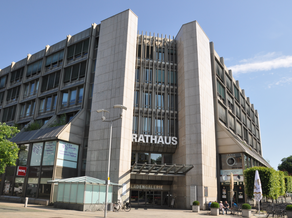Sewer network - new construction and maintenance
The local sewer system serves the drainage of our town. The sewers need to be checked regularly. Some sewers in the city are already around 100 years old and need to be partially renovated or replaced.
As-built plans of the local sewer system
As a building owner or planner, you will receive extracts from the as-built plans of the public sewer system from us for the planning of construction measures that use the public traffic area and for the planning of structures that are to be connected to the public sewer system. As a rule, you will receive the excerpts as a PDF file for a DIN A4 printout at a scale of 1:500. More extensive plan information requires consultation.
As-built plans of private property drainage systems are not available. In private residential construction, it is not usual to produce as-built plans after completion of a project. As a rule, we therefore have approval plans, which may, however, differ greatly from the actual design.
New sewer construction and development
New sewers are required as part of the development of residential and commercial areas, but also in connection with the adaptation of pipe dimensions to changed hydraulic requirements in the existing system, as well as with the replacement of existing sewers that cannot be rehabilitated using the closed construction method due to their damage class. Planned sewer construction measures are agreed in annual coordination meetings.
Sewage charges and sewage contribution
When new properties are developed, the respective property owners are required to pay wastewater contributions depending on the plot area and permitted floor space, irrespective of the sewer fee and house connection costs.
Sewage charges are levied to cover the ongoing and fixed operating costs of the sewer system and sewage treatment plant. The wastewater fee is divided into two components in order to create a more equitable fee structure and to provide an incentive for ecological behavior. The charge for wastewater is levied on the basis of the volume of fresh water consumed. There is also a charge for the disposal of rainwater per square meter of paved area. The rainwater fee, which is assessed together with the property tax, can be reduced by collecting rainwater, i.e. by building cisterns. The applicable fees can be found in the municipal wastewater regulations (see below).



